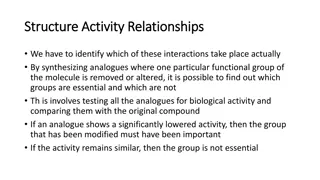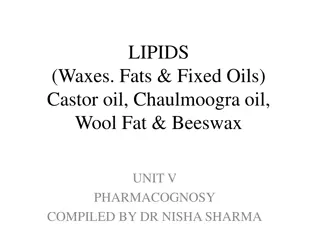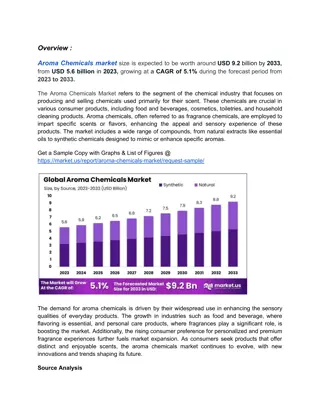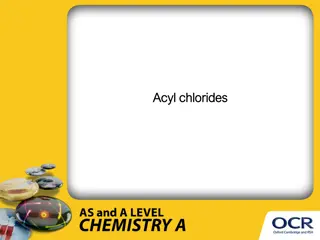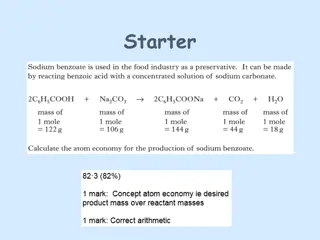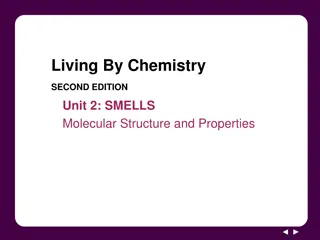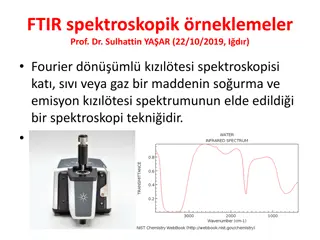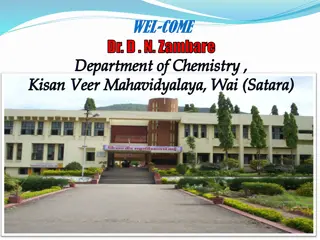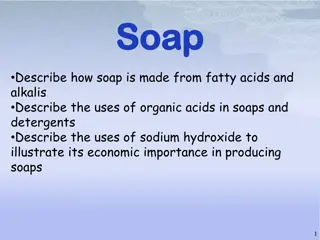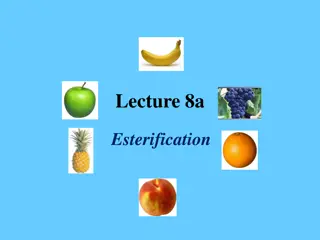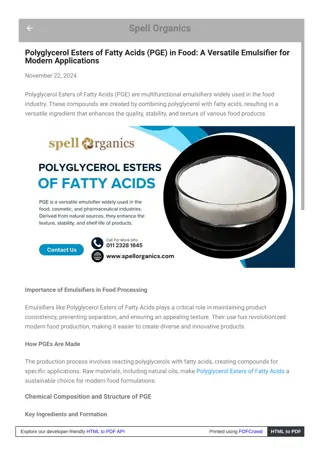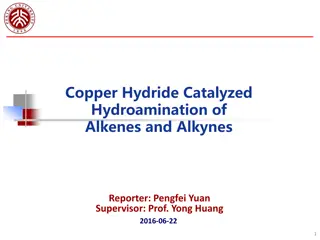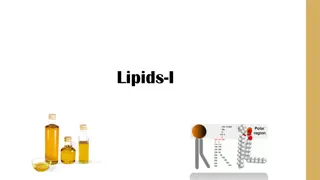Esters
Esters are chemical compounds formed from alcohol and carboxylic acid reactions. They have distinct smells, commonly fruity or floral, and find applications in food flavorings, perfumes, and solvents. Learn about their formation, structural formulae, and hydrolysis reactions in this informative guide.
Download Presentation

Please find below an Image/Link to download the presentation.
The content on the website is provided AS IS for your information and personal use only. It may not be sold, licensed, or shared on other websites without obtaining consent from the author.If you encounter any issues during the download, it is possible that the publisher has removed the file from their server.
You are allowed to download the files provided on this website for personal or commercial use, subject to the condition that they are used lawfully. All files are the property of their respective owners.
The content on the website is provided AS IS for your information and personal use only. It may not be sold, licensed, or shared on other websites without obtaining consent from the author.
E N D
Presentation Transcript
What are they? How are they made? Formed when an alcohol reacts with a carboxylic acid. Very slow reaction, unless! an acid catalyst used (usually sulphuric acid) A condensation reaction The condensation reaction between the hydroxyl group and the carboxylic acid known as esterification. Reverse reaction = ester hydrolysis
Names of esters end in oate. Naming Named after alcohol & carboxylic acid from which they are derived. O let s name some esters! let s name some esters! C CH3 CH3 CH2 O ethyl ethanoate this part comes from the alcohol & is named after it this part from the acid and is named after it
Structural formulae Although the previous structural formula are the clearest way of showing esters, they can draw out in a shortened form. In this version the acid part has been written first ethyl ethanoate Or O O Either CH2 CH3 C CH3 O CH3 Identify the group attached to the C=O this is from the acid The group attached to the O- is from the alcohol. C CH2 O CH3
Wait! Whats that smell? ester ethyl methanoate 3-methylbutyl ethanoate ethyl 2-methylbutanoate phenylmethyl ethanoate fragrance raspberries pears apples jasmine Esters have strong, sweet smells. Their bouquet is often floral or fruity. This means they are used in food flavourings & perfumes. Also, very good at dissolving organic compounds so often used as solvents.
Ester hydrolysis Breakdown of an ester by water. Process sped up by catalysis Can use an acid to catalyse (H2SO4) Alkali catalysts (e.g. sodium hydroxide) can also be used but instead of producing carboxylic acid a carboxylate salt is formed. Alkaline hydrolysis goes to completion & hence is usually preferred.
R O H O C R + + O R O C R + + H O This is why it is a condensation reaction because water is produced! H2O Definition of a condensation reaction = two molecules reacting to form a larger molecule with the elimination of a small molecule such as water Definition of a condensation reaction = two molecules reacting to form a larger molecule with the elimination of a small molecule such as water
O CH ethyl methanoate CH3 CH2 O O C CH2 CH3 methyl propanoate CH3 O O methyl methanoate CH CH3 O
FORWARD REACTION = condensation reaction, the esterification of an alcohol using acid catalyst under reflux. R O H O C R + + O R O C R + + H O H2O REVERSE REACTION = ester hydrolysis, same catalyst works for both forward reverse reactions. REVERSE REACTION = ester hydrolysis, same catalyst works for both forward & reverse reactions.
ethanol ethyl ethanoate O CH3 CH2 OH C CH3 CH3 CH2 O + + + + O OH- C CH3 -O not a reaction that exists in equilibrium (unlike using acid catalyst) ethanoate ion not a reaction that exists in equilibrium (unlike using acid catalyst)



